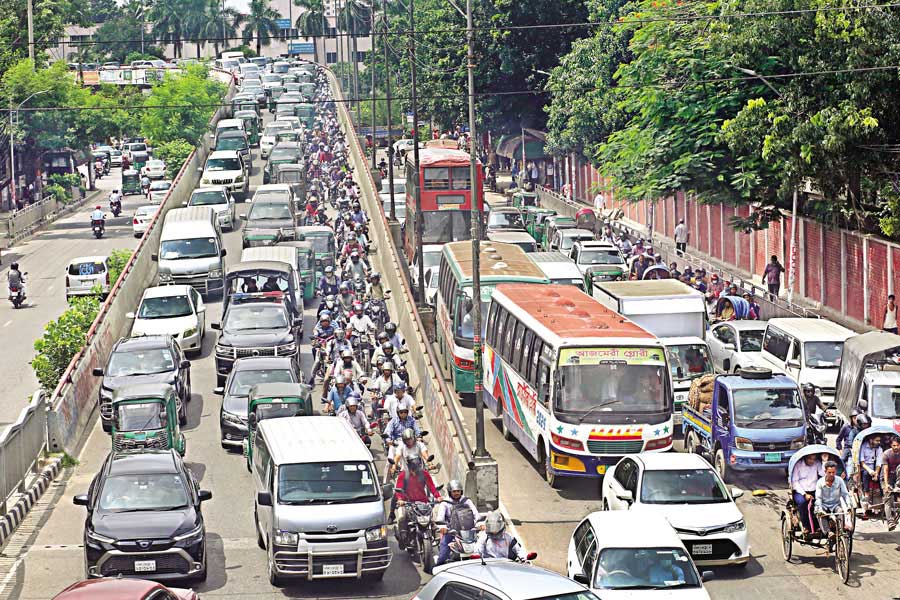
Published :
Updated :

Chief Adviser of the interim government, Dr Muhammad Yunus, at a recently held meeting with some officials of Dhaka Metropolitan Police (DMP) and experts on transport engineering from the Bangladesh University of Engineering and Technology (BUET) asked them to find an answer to the city's traffic mess. In particular, he asked the transportation engineers of BUET to come up with some home-grown solutions to the dysfunctional traffic signalling system using local expertise. The good news is that the BUET engineers Dr Moazzem Hossain and Dr Md. Hadiuzzaman are learnt to have developed indigenous technology-based 'traffic signal lights' to be installed at 22 road junctions on a pilot scale. The pilot project will be implemented by the two city corporations under the supervision of BUET. Initially, the project will reportedly start from the coming month (December) by installing the signal lights at four road intersections, namely the Hotel Intercontinental, Bangla Motor, Karwan Bazar and Farmgate. This is unquestionably a welcome move towards relieving the city of its unruly traffic tangle that has by now gained widespread notoriety.
However, it is also not the first time that similar efforts were made to this end, some with a lot of fanfare, but it all came to nothing. The fact that all previous attempts to resolve Dhaka's traffic crisis fell through does not mean that it has no solution. In neighbouring India, megacities like Kolkata and Delhi had similar, even worse, traffic problems. But those cities have successfully cleaned up their traffic mess. The most important thing required to resolve such a problem, however intricate it may seem, is the political will. The failure of the past moves to straighten up Dhaka's traffic system had mostly to do with behind-the-scenes political wheeling and dealing. It was often the lack of 'good will', if not the will as such, that came in the way of many past plans and projects, especially to improve the capital city's public transport system, which in fact is the key to addressing Dhaka's traffic anarchy. Most importantly, the city's traffic problem is not simply about malfunctioning signalling system. One would find too many vehicles at any busy road crossing jostling with one another for space. Among those are private cars, which carry few passengers, but occupy disproportionately larger amount of road space. Two cars, though they carry only 4 to 6 people, use road space equivalent to that of a bus that carries 40 to 50 passengers. Private cars on the city roads are obviously misusing precious road space. Even so, private car population of the capital city has been growing by leaps and bounds. According to an estimate, the number of private cars in the city has about doubled between 2010 and 2024. Currently, there are around 350,000 registered private cars in the city. Many of these cars belong to people who do not fall in category of the rich. In fact, some of these people took bank loan to buy car to avoid the uncertainties, hassles and insecurity of travel by public transports. For similar reasons, the number of motorbikes on the city roads is exploding. Add to them other motorised and non-motorised vehicles whose numbers are also on the rise. Against this backdrop, should one think of addressing the city's ever-worsening traffic nightmare?
At this point, one would like to await the plans transportation experts employed by the Chief Adviser might recommend. But any solution to Dhaka's traffic puzzle must also provide a clue to addressing the prevailing anarchy in its public transport system. It should be better organised, disciplined and operated by a company whose majority share is owned preferably by the government.
And the motorised and non-motorised vehicles that clog the road traffic should be removed from the main roads. At the same time, sale of private cars and motorbikes should be discouraged.
sfalim.ds@gmail.com


 For all latest news, follow The Financial Express Google News channel.
For all latest news, follow The Financial Express Google News channel.